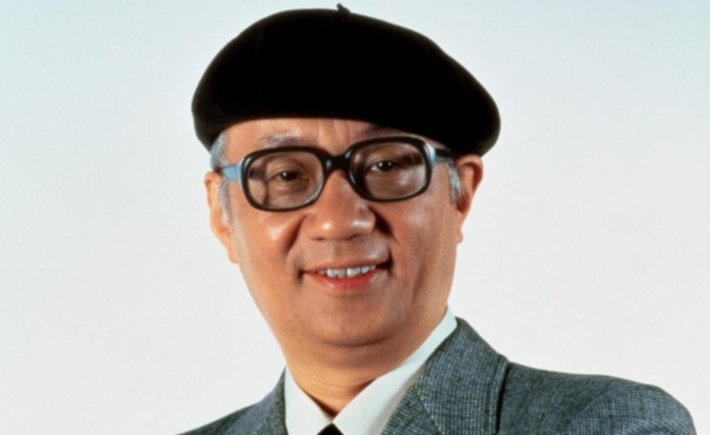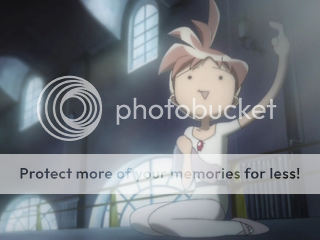Cel Animation Vs. Digital Animation: Why it's Unfair to Compare Them
Let’s talk cel animation.
This is Osamu Tezuka. Considered one of Japan’s greatest Manga artists, Tezuka was also famous for birthing the anime studio system in the 60’s and 70’s. His notable works are too many to name, but it’s safe to say that Astro Boy is both his most-famous work, and the first anime show ever. In other words, he’s a pretty big deal.
Back when anime was still new, everything was drawn on hand-painted cels. There were people responsible for sketching, animating, painting, sealing, laminating, cutting and framing every single cel involved in a show/movie by hand. This meant that your favourite shows or movies were made by people who laboured like dogs with little-to-no help from computers. The fact that any anime, let-alone good anime, managed to exist is impressive, let-alone on a weekly basis. Add in that cel animation was costly, and that animators were paid chump change, and you’ve got a recipe for heavy pressure. It was trial by fire, and the results were either really awful, or really good, with little room for mediocrity.
I bring this up as context for what I’m about to say about the following video from YouTube critic and commenter, Chris Stuckmann, whom I respect and eagerly anticipate new videos from:
Chris Stuckmann, I should point out, is an anime fan. He’s not the biggest anime fan out there, but I’d say he’s around the same as I am when it comes to his Otakudom: knowledgeable enough to be a fan, but not so into it that he’d dedicate hours on new anime premieres or rare collector’s editions of out-of-print shows/Manga. Chris is a fan, like I am, and every-so-often he dedicates time to showing off or discussing anime. Which is all the more reason I think it’s important that I say this, even if it’s somewhat painful: I think Chris’s rant at the end of his video is short-sighted.
I’m not saying that Chris is being willfully ignorant. He’s not an idiot, as evidenced by his brilliantly-researched retrospective on Toonami. He’s also, most-likely, super busy with his career as a film critic (he has a profile on Rotten Tomatoes) and can’t possibly back-up and research every claim he makes about anime. However, since his complaint smells of a greater epidemic in the Otaku fandom, one that I’ve heard many times, I felt I had to address his claim that modern anime lacks the finesse of classic anime, because I don’t think it’s fair.
Let’s go back to the point I made about the anime industry: it’s functioning on a system introduced in the 60’s and 70’s. Back then, everything was done painstakingly by hand, and it was time-crunched for weekly syndication. There was a lot of pressure to complete shows, which meant plenty of shortcuts were taken to ensure deadlines were met. This included reusing frames, only animating the eyes and lip flaps of characters when still (and even then, only having the lips move up and down,) adding speed lines to indicate movement, having still-frames with narration over them so as to indicate time, cutting fluidity to save time on motion, referencing flashbacks via old footage and, of course, using Manga Iconography in place of facial expressions. It worked, and some of the greatest anime ever was made because of it.
However, there was a downside to these cheats. The biggest one was that, especially when compared to what was being drawn in the West, animation quality was sparsely spread throughout each show (or film.) The detail in character models was greater, thanks to the insistence on proper character anatomy, but, let’s face it, anime was cheap when juxtaposed with its Western counterpart. Even today, where computers have sped up the animation process and allowed for better allocation of resources, a high-end anime show in Japan still pales to a cheaply-made show for Western consumption in budget and overall fluidity. There’s simply no contest.
But whatever, Chris wasn’t referring to anime in general. He was talking about movies, which have far better fluidity and design due to their higher budgets. I’m definitely more partial to anime films in general, for a variety of reasons I won’t get into, but that’s not why I mentioned this. Chris compared hand cel films to modern anime shows and stated that there’s a rough charm that the glossier shows of today can’t match. This is unfair for the reasons I mentioned above. You can’t compare an anime film to an anime show in the same way you can’t compare an animated movie to a Saturday morning cartoon. It’s a losing battle even if the films are older, because they’re gonna look better.
But even outside of that, that’s not to say that modern anime shows automatically look inferior. One of the benefits of the computer style is a better allocation of resources, as well as that everything is rendered faster by default. And shows are no different, especially since a high-end show is most-likely being given the same amount of money as the older movie, except it’s more spread out. Remember, if you give a 98-minute film the same budget as a 26-episode show, the film will obviously look better because not as much will need to be drawn. But the show isn’t any less-impressive.
It’s especially problematic to compare the two because you’re discussing two different beasts from two different time periods. It’s like comparing a sabre-tooth tiger to a Bengal tiger and saying the former’s more efficient. Even if you could back that up with facts, it’s irrelevant because the sabre-tooth tiger’s extinct. It’s also neglectful of the Bengal tiger.
Finally, the complaint reeks of arrogance and elitism: “Hand cel animation will forever be better than what we have now!” It’s not true, as good animation is good animation irrespective of era. Is the roughness of the cel animation worth admiring? Yes. Is it a shame that modern anime is much shinier? Maybe. But does that make one better than the other? No, and I’m disappointed in Chris for insinuating that.
Besides, it ignores a bigger problem currently in anime: the system from the 60’s and 70’s is horribly-outdated. And yet, it's still going this way. If it keeps up, the industry model will collapse, studios will shut down and animators will lose their jobs. We’ve already seen snippets with Studio Manglobe’s closure, and it’s going to continue getting worse. I only hope the anime industry realizes this soon and remedies the issue, or it’ll come back to bite them badly.
This is Osamu Tezuka. Considered one of Japan’s greatest Manga artists, Tezuka was also famous for birthing the anime studio system in the 60’s and 70’s. His notable works are too many to name, but it’s safe to say that Astro Boy is both his most-famous work, and the first anime show ever. In other words, he’s a pretty big deal.
Back when anime was still new, everything was drawn on hand-painted cels. There were people responsible for sketching, animating, painting, sealing, laminating, cutting and framing every single cel involved in a show/movie by hand. This meant that your favourite shows or movies were made by people who laboured like dogs with little-to-no help from computers. The fact that any anime, let-alone good anime, managed to exist is impressive, let-alone on a weekly basis. Add in that cel animation was costly, and that animators were paid chump change, and you’ve got a recipe for heavy pressure. It was trial by fire, and the results were either really awful, or really good, with little room for mediocrity.
I bring this up as context for what I’m about to say about the following video from YouTube critic and commenter, Chris Stuckmann, whom I respect and eagerly anticipate new videos from:
Chris Stuckmann, I should point out, is an anime fan. He’s not the biggest anime fan out there, but I’d say he’s around the same as I am when it comes to his Otakudom: knowledgeable enough to be a fan, but not so into it that he’d dedicate hours on new anime premieres or rare collector’s editions of out-of-print shows/Manga. Chris is a fan, like I am, and every-so-often he dedicates time to showing off or discussing anime. Which is all the more reason I think it’s important that I say this, even if it’s somewhat painful: I think Chris’s rant at the end of his video is short-sighted.
I’m not saying that Chris is being willfully ignorant. He’s not an idiot, as evidenced by his brilliantly-researched retrospective on Toonami. He’s also, most-likely, super busy with his career as a film critic (he has a profile on Rotten Tomatoes) and can’t possibly back-up and research every claim he makes about anime. However, since his complaint smells of a greater epidemic in the Otaku fandom, one that I’ve heard many times, I felt I had to address his claim that modern anime lacks the finesse of classic anime, because I don’t think it’s fair.
Let’s go back to the point I made about the anime industry: it’s functioning on a system introduced in the 60’s and 70’s. Back then, everything was done painstakingly by hand, and it was time-crunched for weekly syndication. There was a lot of pressure to complete shows, which meant plenty of shortcuts were taken to ensure deadlines were met. This included reusing frames, only animating the eyes and lip flaps of characters when still (and even then, only having the lips move up and down,) adding speed lines to indicate movement, having still-frames with narration over them so as to indicate time, cutting fluidity to save time on motion, referencing flashbacks via old footage and, of course, using Manga Iconography in place of facial expressions. It worked, and some of the greatest anime ever was made because of it.
However, there was a downside to these cheats. The biggest one was that, especially when compared to what was being drawn in the West, animation quality was sparsely spread throughout each show (or film.) The detail in character models was greater, thanks to the insistence on proper character anatomy, but, let’s face it, anime was cheap when juxtaposed with its Western counterpart. Even today, where computers have sped up the animation process and allowed for better allocation of resources, a high-end anime show in Japan still pales to a cheaply-made show for Western consumption in budget and overall fluidity. There’s simply no contest.
But whatever, Chris wasn’t referring to anime in general. He was talking about movies, which have far better fluidity and design due to their higher budgets. I’m definitely more partial to anime films in general, for a variety of reasons I won’t get into, but that’s not why I mentioned this. Chris compared hand cel films to modern anime shows and stated that there’s a rough charm that the glossier shows of today can’t match. This is unfair for the reasons I mentioned above. You can’t compare an anime film to an anime show in the same way you can’t compare an animated movie to a Saturday morning cartoon. It’s a losing battle even if the films are older, because they’re gonna look better.
But even outside of that, that’s not to say that modern anime shows automatically look inferior. One of the benefits of the computer style is a better allocation of resources, as well as that everything is rendered faster by default. And shows are no different, especially since a high-end show is most-likely being given the same amount of money as the older movie, except it’s more spread out. Remember, if you give a 98-minute film the same budget as a 26-episode show, the film will obviously look better because not as much will need to be drawn. But the show isn’t any less-impressive.
It’s especially problematic to compare the two because you’re discussing two different beasts from two different time periods. It’s like comparing a sabre-tooth tiger to a Bengal tiger and saying the former’s more efficient. Even if you could back that up with facts, it’s irrelevant because the sabre-tooth tiger’s extinct. It’s also neglectful of the Bengal tiger.
Finally, the complaint reeks of arrogance and elitism: “Hand cel animation will forever be better than what we have now!” It’s not true, as good animation is good animation irrespective of era. Is the roughness of the cel animation worth admiring? Yes. Is it a shame that modern anime is much shinier? Maybe. But does that make one better than the other? No, and I’m disappointed in Chris for insinuating that.
Besides, it ignores a bigger problem currently in anime: the system from the 60’s and 70’s is horribly-outdated. And yet, it's still going this way. If it keeps up, the industry model will collapse, studios will shut down and animators will lose their jobs. We’ve already seen snippets with Studio Manglobe’s closure, and it’s going to continue getting worse. I only hope the anime industry realizes this soon and remedies the issue, or it’ll come back to bite them badly.





Comments
Post a Comment